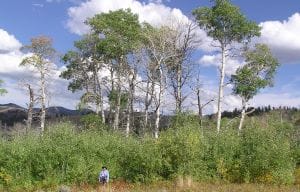Yellowstone and Complexity

Life in the 21st century is reader supported, please subscribe and make life sustainable.
I always liked the term ecology opposed to environment. I suppose it comes from my youth. My first semester at the University of Arizona, I was a Wildlife Ecology major. In my first class, I learned over the long history of this planet, all wildlife ecology had recently become completely dependent on the wild activities of one species, homo sapiens. I learned the most important thing to conserve wild ecological systems was to do nothing except let them have enough room. They took care of themselves.
Of course doing nothing is completely anathema to this excessively chattering, hairless ape that invented the modern. Being alone in thought is repugnant to an era of ubiquitous screens and incessant stimulation. Soon, our Tech-Lords promise, we will not have to think at all. It is understood by very few how great an ecological change humanity has worked on this planet. Leaving aside land untouched is thought to be a sin. Like a dog loosed in his neighborhood, we excitedly pissed on it all.
Ecology as a scientific understanding is not much more than two centuries old. Oxford Dictionary defines ecology as “the branch of biology that deals with the relations of organisms to one another and to their physical surroundings.” The word derives from the Greek, oikos, meaning house. These houses are much older than us. Despite our ignorance and our best efforts to bring them down on our heads most still remain. Nature is incredibly resilient.
In recent years, we discovered the damage we inflicted on various ecological systems can be reversed. One example is the amazing revival of the bald eagle. It was ironic the nation’s symbol had been brought to the edge of extinction by the use of the pesticide DDT. With the banning of its use, the eagle populations revived. For the more romantic of you, maybe it's an analogy suggesting there’s still hope for reviving this republic?
Another great recent example of this resilience is the reintroduction of wolves into Yellowstone, not only an example of resilience, but also revelatory of the immense complexity of ecological systems. Directly tied to the reintroduction of the wolf has been a revival of Aspen groves throughout much of the park. A just released study by the University of Oregon states,
“A paper in Forest Ecology and Management documents the first new generation of overstory aspen trees in Yellowstone’s northern range in 80 years, three decades after wolves were reintroduced to the nation’s oldest national park.”

